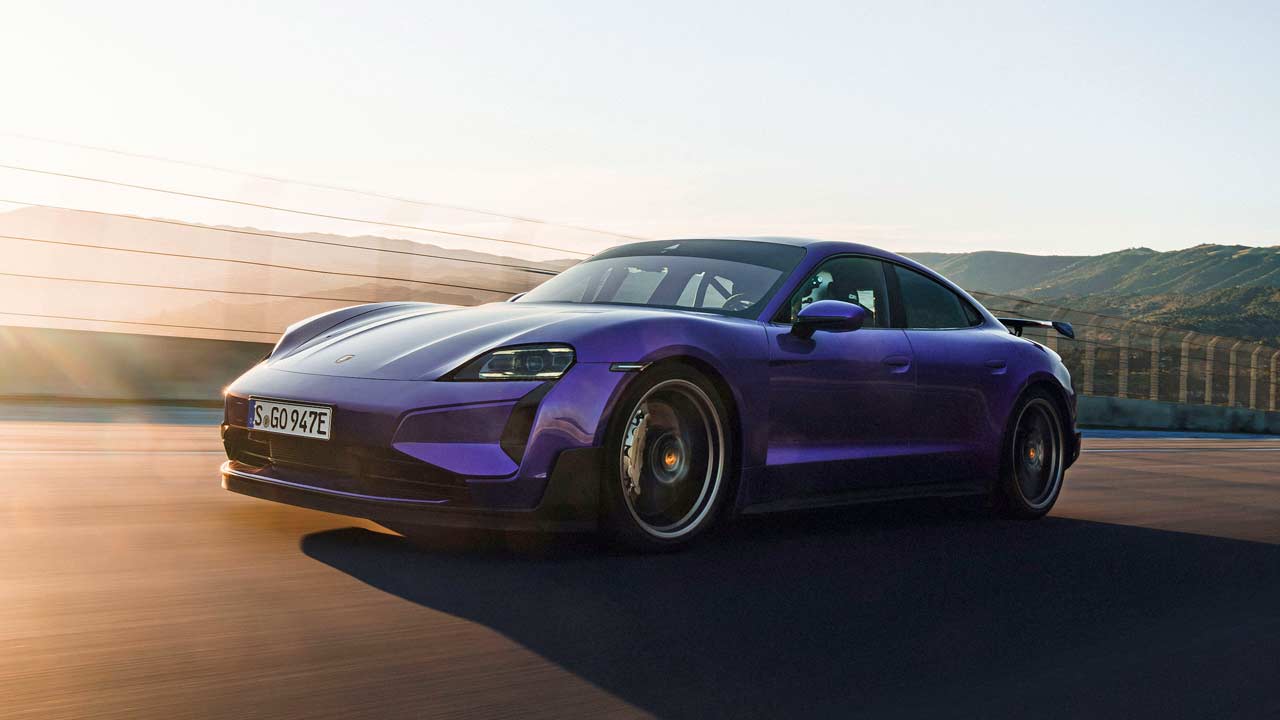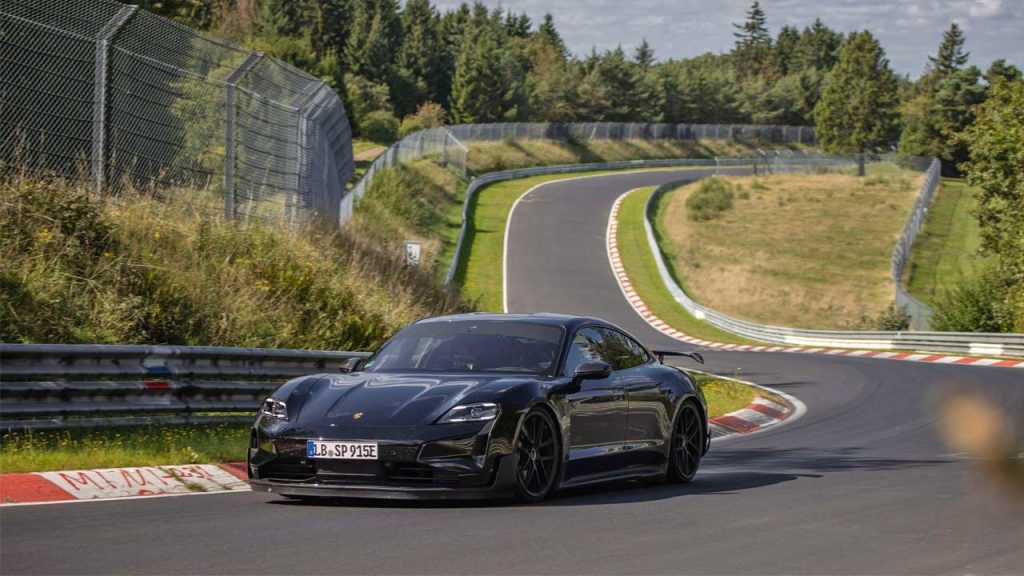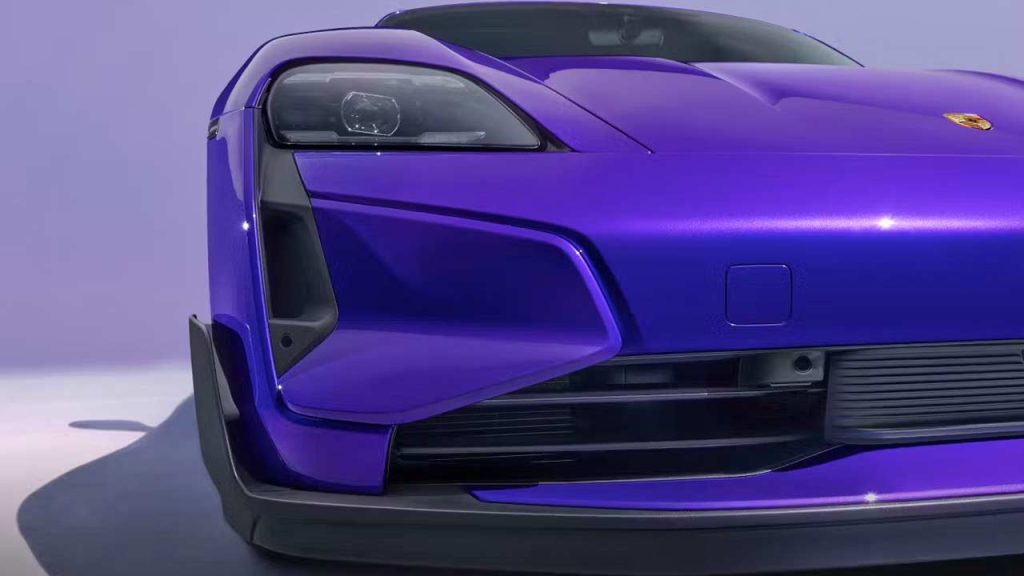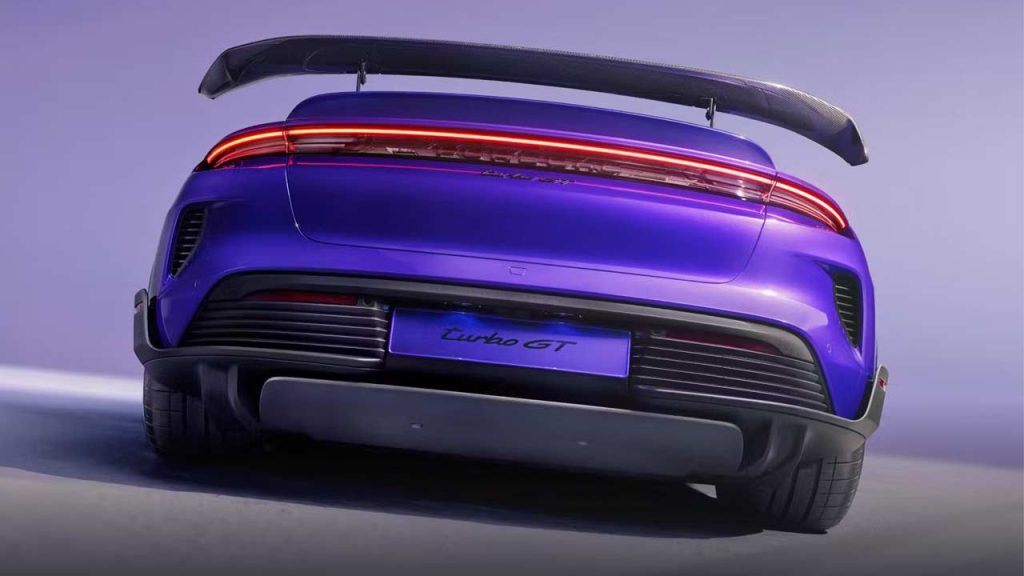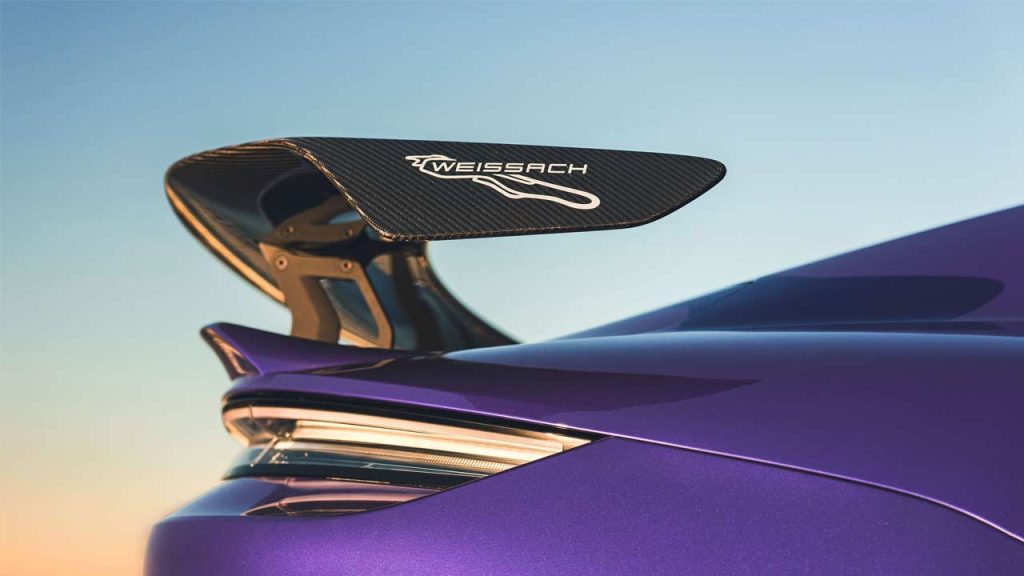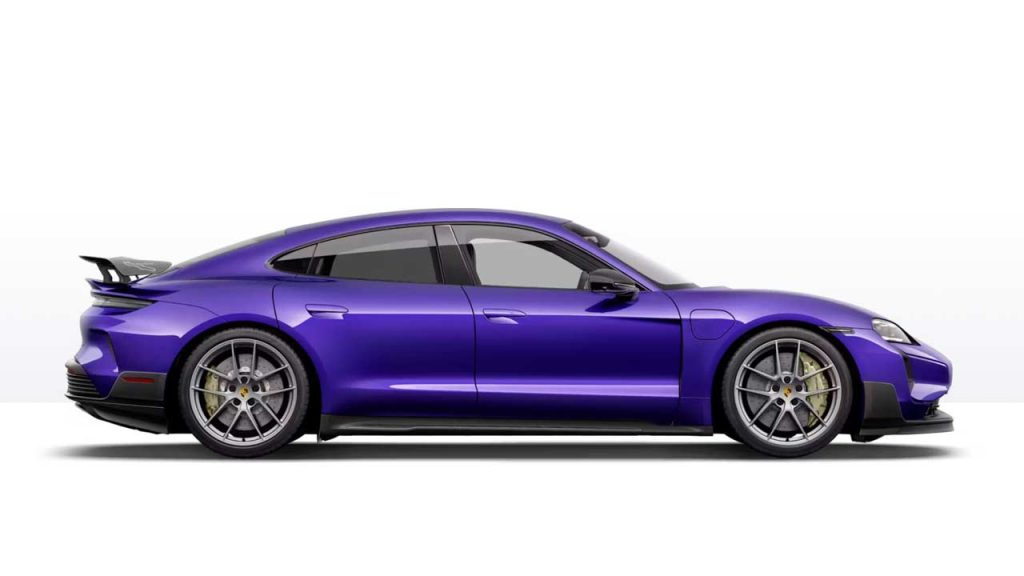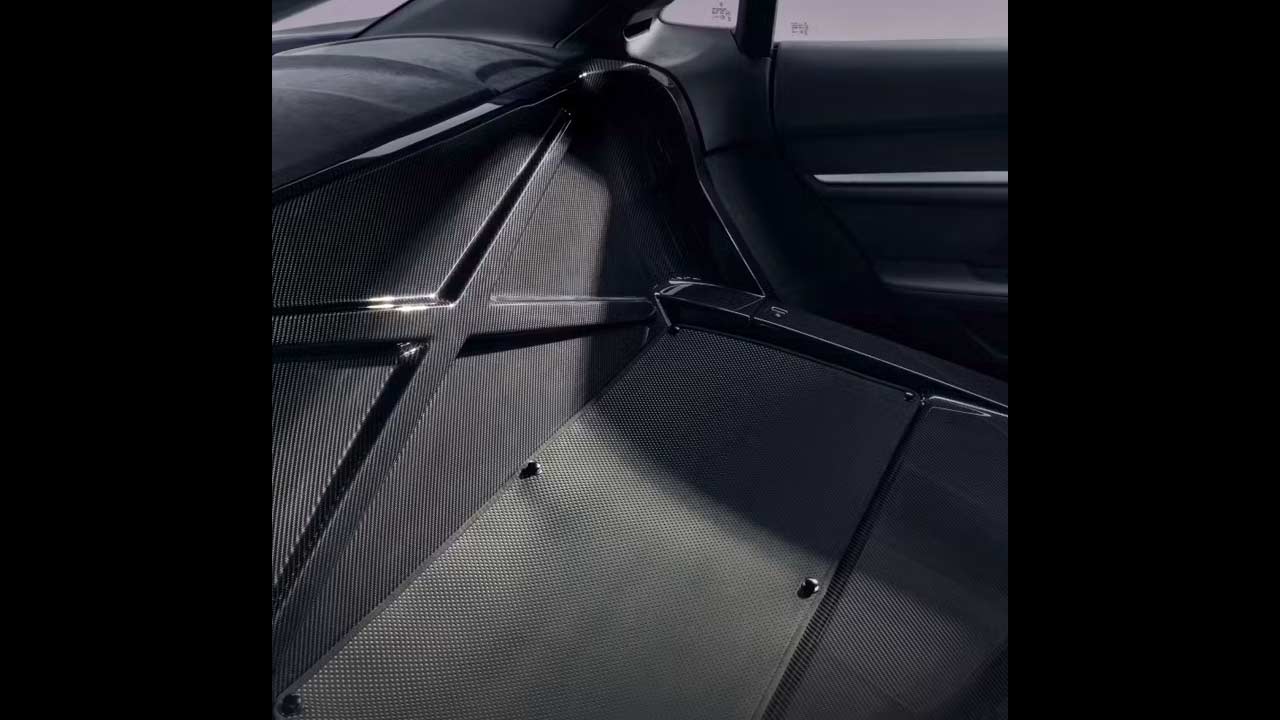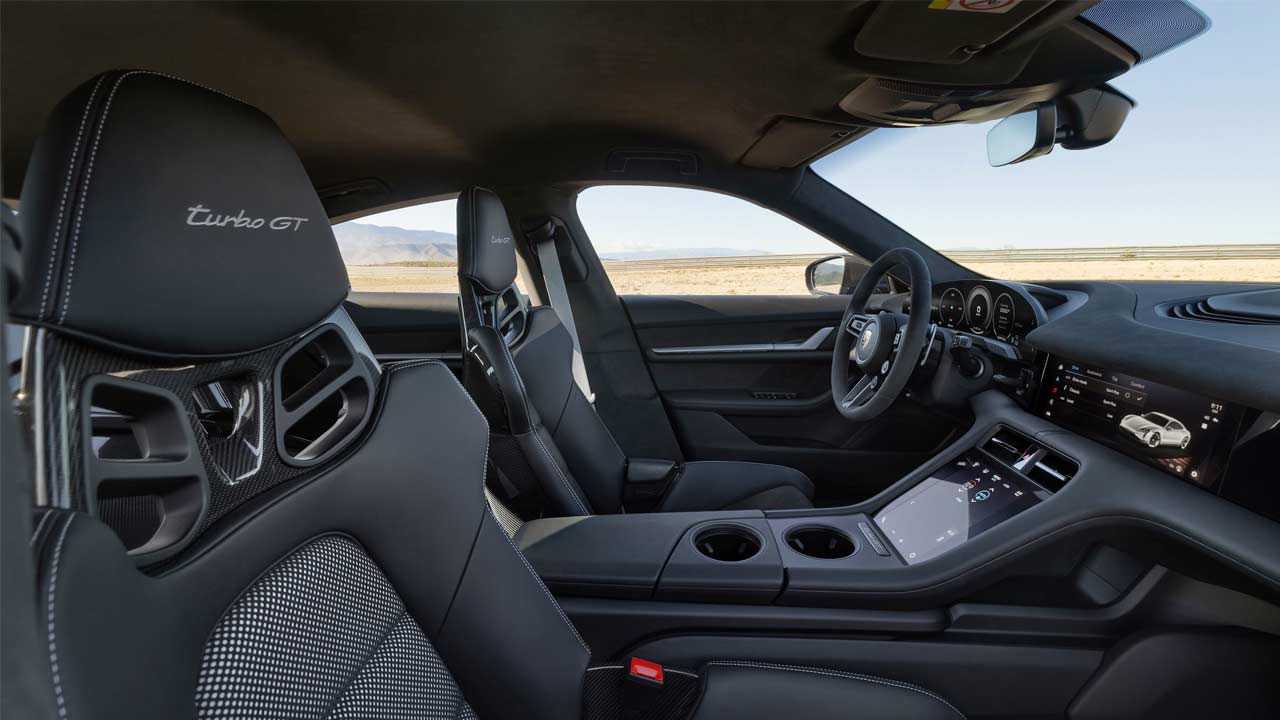As you might remember, Porsche refreshed the Taycan lineup recently; the updates/upgrades included a power bump of up to 80 kW (109 metric hp). The Taycan Turbo S for example, got upgraded from 560 kW (761 metric hp) and 1,050 Nm (774 lb-ft) of Overboost figures to 700 kW (952 metric hp) and 1,110 Nm (819 lb-ft). Now, who on earth thinks 900+ hp and 1,000+ Nm of torque are still not enough? That too for a 4-door saloon? I’m not sure who, but maybe the folks who produce the so-called “hypercars” might have the answer. Why do I say that? Well, Porsche is now associated with a hypercar brand, and maybe that’s how they got inspired to produce the Taycan Turbo GT.
Prices start at €240,000 in Germany (includes VAT), £186,300 in the UK (includes VAT), and $230,000 in the US (MSRP; excludes taxes, registration, etc).
Last month, the prototype recorded a lap time of 7:07.55 minutes on the Nurburgring Nordschleife, beating the Taycan Turbo S’ record by 26 seconds. Of course, behind the wheel was Porsche development driver Lars Kern. On 23 February 2024, with a lap time of 1:27.87 min, the Taycan Turbo GT with Weissach package earned the title of fastest electric series-production car at the Weathertech Raceway Laguna Seca, with Lars Kern behind the wheel.
Will talk about the Weissach package in just a minute or two, but the important thing to note is that the Taycan Turbo GT is lighter by 75 kg (165 lbs) compared with the Taycan Turbo S. Porsche says that a number of carbon parts contribute to this weight saving/shaving, including the B-pillar panels, upper shells of the door mirrors, and side skirt inlays. 21-inch lightweight forged wheels, lighter ceramic brakes based on the Porsche Ceramic Composite Brake (PCCB), CFRP bucket seats, a lightweight luggage compartment, and the omission of the electric soft-closing function of the tailgate, are some of the other weight-saving measures.
The Taycan Turbo GT comes standard with the dynamics package—which includes the Porsche Active Ride suspension with GT-specific tuning which is claimed to ensure “an almost perfect connection to the road”, thanks to a balanced distribution of wheel loads. The front spoiler with aeroblades is also specific to the Taycan Turbo GT. Matrix LED headlights come standard, but they can be upgraded to HD matrix LED headlights at no extra cost.
A total of six exterior colors are available, including new paint options of Pale Blue Metallic and Purple Sky Metallic. These are exclusively available for the Taycan Turbo GT for one year.
As for the Taycan Turbo GT with Weissach package, well, it gets—among other things—air deflector elements on the underbody, a front diffuser, and a fixed carbon fibre rear wing. Porsche claims a total downforce of up to 220 kg (485 lbs). Furthermore, eliminating all equipment not required for track driving has shaved off another ~70 kg (154 lbs) compared with the Taycan Turbo GT without the Weissach package. I mean, this thing doesn’t even come with rear seats; instead, there’s carbon cladding with a storage compartment behind the front seat shells.
The analogue clock (part of the Sport Chrono package) and the foot and boot mats are also gone. There’s less insulation material, of course. The variant has a charge port door only on the passenger side, which is operated manually instead of electrically. Special sound- and heat-insulating glass and the Sound Package Plus also save weight; the latter does without rear speakers and replaces the Bose surround sound system.
On the regular Taycan Turbo GT, the standard carbon fibre bucket seats can be replaced with the optional Adaptive Sports Seats Plus (with electric 18-way adjustment and memory package) at no extra charge. On the steering wheel, the rim is covered with black Race-Tex and has a 12 o’clock marking. The Sport Chrono package is included as standard.
The Taycan Turbo GT is still a dual-motor AWD variant; there’s no extra motor here. With launch control, the Overboost output figures are 760 kW (1,033 metric hp) and 1,340 Nm (988 lb-ft). Without launch control, you get 580 kW (788.5 metric hp). How did they achieve these figures? Well, 600-ampere pulse inverter in the Taycan Turbo S vs 900-ampere pulse inverter in the Taycan Turbo GT. For better efficiency, silicon carbide is used as the semiconductor material in the pulse inverter. This significantly reduces switching losses in the PWR and enables higher switching frequencies. The transmission ratio and the robustness of the gearbox have also been improved, allowing for higher torque figures.
But anyway, these numbers are the same for both the regular model and the one with the Weissach pack. With launch control, the Taycan Turbo GT is claimed to sprint from 0-100 km/h (62 mph) in 2.3 seconds; the Weissach one takes 2.2 seconds. The top speed numbers are 290 km/h (180 mph) and 305 km/h (189.5 mph), respectively.
The combined WLTP range for Taycan Turbo GT is anywhere between 328 and 344 miles (528 – 554 km); the Weissach pack can deliver anywhere between 334 and 345 miles (537 – 555 km).

Leave a Reply
Note: Comments that are unrelated to the post above get automatically filtered into the trash bin.
